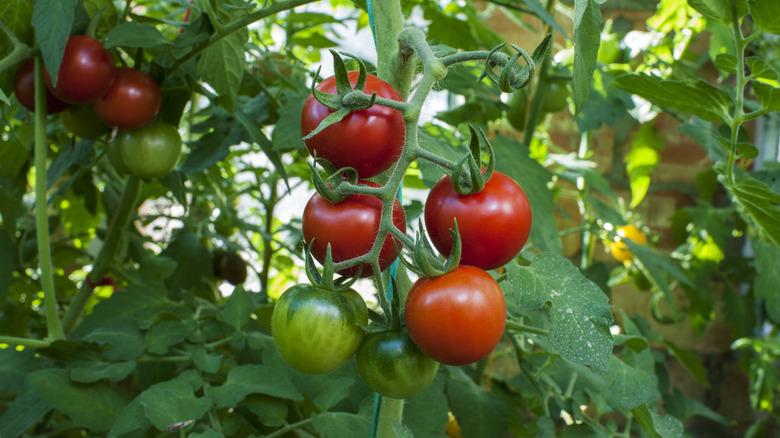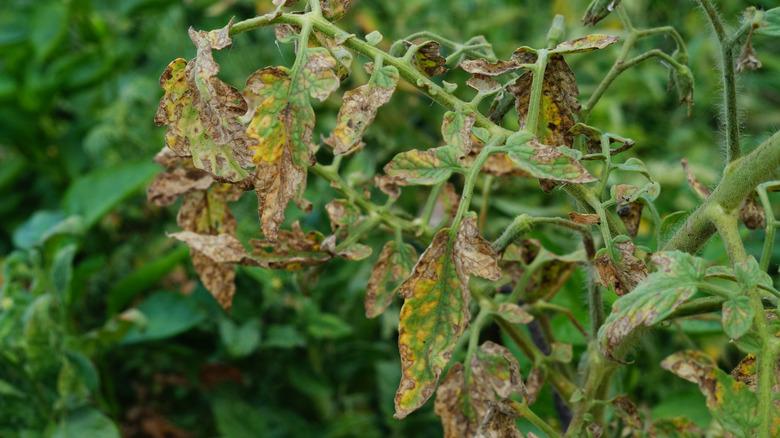The Epsom Salt Hack That Will Make Your Tomato Plants Thrive
Homegrown tomatoes are widely considered the pinnacle of backyard produce. Songs, articles, and myths have been produced about the romantically dubbed love apples. A bumper crop gives a gardener bragging rights, a type of royalty, and suffering through a poor tomato year can cause depression. The question then becomes, "How do I successfully grow tomatoes in my garden?" There is no single answer to that question, but most of what you need to do is straightforward standard gardening techniques. Fertilizer, water, and sunlight are the keys. It's when your plants start to show signs of distress that you might need to take advantage of hacks to fight those problems. Is the Epsom salt hack for all tomato plants or for just a specific kind of plant stress?
Epsom salt is magnesium sulfate. As such it can be a way to bolster the magnesium and sulfur content of your soil. Many plants can benefit from it, including using Epsom salts on your lawn. Magnesium is an essential mineral for fruit production in tomato plants. But the good news is that most garden soils have plenty of magnesium. The exception might be some sandy soils. Tomato plants only need a tiny bit of sulfur, and, again, sandy soils may be low in available sulfur. Now, let's get into when you should use Epsom salts for your plants.
When should I use Epsom salts
The obvious time to use Epsom salts on your tomatoes is when they need it: If they have a magnesium deficiency. A magnesium deficiency is indicated by green veins in the leaves, but the rest of the leaf has discolored splashes of red, yellow, or brown. It will lower fruit production, and the plant will be impaired. There are a couple of ways that you can apply Epsom salts. Dissolve a tablespoon of Epsom salts into a gallon of water. You can either apply it to the soil at the base of the plant or put it in a spray bottle and spray the leaves. (This solution would be called a foliar spray.) You shouldn't apply it more than once a month.
As said above, magnesium deficiency is most likely to occur in sandy soils. However, as the season moves on, the deficiency can occur in any soil as the plants make use of the available magnesium. But try not to apply magnesium if your plant is not in deficit. Too much magnesium can interfere with the plant absorbing other nutrients and can also stunt the overall growth of the plant. (Which will harm fruit production.) It may be difficult to tell why your tomato plants are dying, but magnesium deficiency is one important option.
The desire to become tomato growing royalty is strong and can lead you looking for ways to increase your backyard yield. And if you have a magnesium deficiency in your soil, Epsom salts are your ticket to success. But it is not a silver (magnesium?) bullet that will boost your production. Fertilizer, water, and sunlight will have to do.

